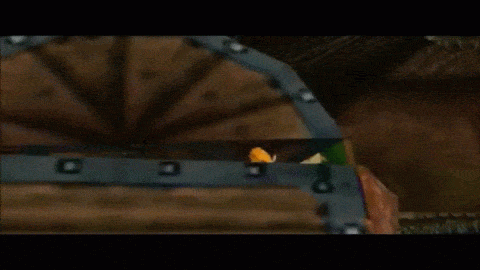You may have heard the terms “intrinsic” and “extrinsic” rewards used in reference to game design and wondered what they meant. These terms are ways to describe different types of rewards earned by the player over the course of gameplay. Categorizing rewards as intrinsic and extrinsic are helpful in planning the way gameplay and player progression is structured and gated. This is because intrinsic and extrinsic rewards usually make the player feel different emotions - intrinsic rewards make players feel skillful, while extrinsic rewards make them feel powerful. While these emotions are related, they are not the same thing and should not be conflated with each other.

“Extrinsic” means coming from the outside or external. An extrinsic reward is one that is not something that the player can learn, but it is something obtained by the player’s character. An extrinsic reward is can be a new weapon, gold, experience points, valuable items, etc. In order to progress through the game, the player might need to earn enough experience points to level up enough, find gear strong enough, or even find a right key to unlock the door in order to enter the next zone. Obtaining items in Zelda: Ocarina of Time like the hookshot are examples of extrinsic rewards used to gate progress through the game - Link simply cannot traverse certain areas without first obtaining the hookshot. Extrinsic rewards are typically doled out in very precise fashion - either through means determined by a systemic formula or hand-placed by a designer as a reward for something specific. Extrinsic rewards make the player feel powerful. The player hits harder, can shrug off blows that used to defeat them, the enemies feel easier to defeat, all without needing to expend any additional thought or effort.

“Intrinsic” means coming from the inside. An intrinsic reward is something that the player learns (rather than the player’s character) and can be used by the player on any playthrough. This might be a technique, a strategy, an opening sequence, or a build order. Ryu players don’t need to reach a certain level or complete a quest before they can throw a hadouken, they just need to learn how. A player who knows how to throw a hadouken can do so while playing on any platform without needing to unlock or earn anything. Other examples of intrinsic rewards include weapon-specific moves/attacks in Monster Hunter, shield surfing in Breath of the Wild, laning and jungling strategy in League of Legends, and footsies in fighting games. We can build these intrinsic rewards and teach the player how to use them or leave them for players to discover through their own experimentation. Intrinsic rewards make players feel skillful - each situation where they are required to perform and others cannot reminds them that they have earned knowledge and skill that belongs to them and cannot be taken away.

Many games gate progression with a combination of both intrinsic and extrinsic rewards. Games with more intrinsic rewards tend to lean more toward replayability and favor the demonstration of skill - players often must hone their ability to play the game in order to progress, like in Dark Souls games. Games with more extrinsic rewards place heavier emphasis on collecting and earning specific rewards that provide more power to the player’s character directly, like World of Warcraft where players chase the feeling of power. You might notice that a major principle of speed running research is the deconstruction of many extrinsic rewards into intrinsic skills (e.g. RNG manipulation, min/maxing leveling/money earning, etc.) so that the game can be completed more quickly and consistently. The decisions about whether rewards should be intrinsic or extrinsic have a huge effect on the overall way the game will be played. Because intrinsic rewards can be brought over to any playthrough via prior knowledge, any would-be designer must recognize that they should always be available at all times. Intrinsic rewards usually make the players feel skillful, while extrinsic rewards make the player feel more powerful. Note the difference and keep this in your design toolbox and use where appropriate.
[Join us on Discord] and/or [Support us on Patreon]
Got a burning question you want answered?
- Short questions: Ask a Game Dev on Twitter
- Long questions: Ask a Game Dev on Tumblr
- Frequent Questions: The FAQ